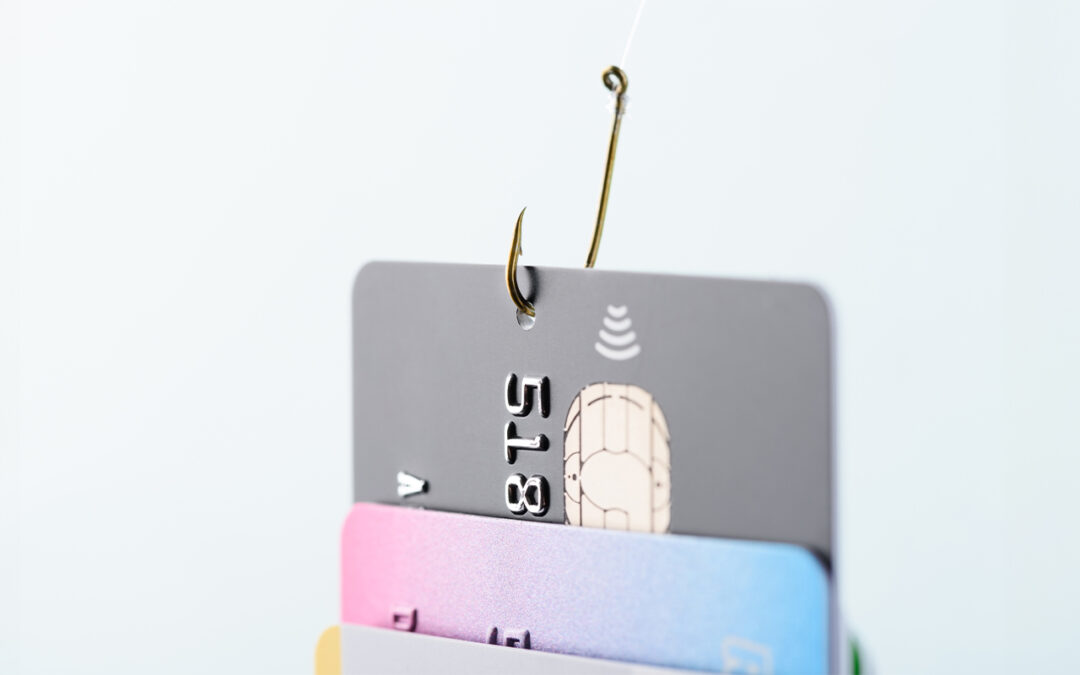
by yncuniversity | Feb 20, 2025 | Financial Literacy
Mistakes You Can Make with an RRSP & How to Avoid Them
February 20, 2025
When it comes to RRSPs (Registered Retirement Savings Plans), there are a few common mistakes that can negatively impact your savings or tax strategy. Here are some of the most common mistakes and tips on how to steer clear of them.
Exceeding Your Contribution Limit (Over-Contribution)
Mistake: Going over the RRSP contribution limit, even by a little, can trigger a penalty. In Canada, the over-contribution penalty is 1% per month on the excess amount, which can add up quickly.
How to Avoid: Always check your RRSP contribution room before contributing. You can find it on your Notice of Assessment from the CRA or through the CRA My Account portal. If you go over by up to $2,000, you won’t face penalties, but anything above that will incur a 1% monthly penalty.
Failing to Carry Forward Unused Contribution Room
Mistake: Not utilizing unused contribution room from previous years can be a missed opportunity. RRSP contribution room is carried forward indefinitely, so if you didn’t use the full limit in one year, you can make it up in future years.
How to Avoid: Make sure you track your contribution room each year, which the CRA reports on your Notice of Assessment. If you missed contributing in prior years, try to catch up in later years, particularly in high-income years to maximize tax savings.
Withdrawing RRSP Funds Early Without Considering the Tax Implications
Mistake: Withdrawing funds from your RRSP before retirement means the withdrawal is taxed as income, which can be a significant hit, especially if you’re in a high tax bracket.
How to Avoid: Avoid early withdrawals unless absolutely necessary. If you’re buying your first home, use the Home Buyers’ Plan (HBP), where you can withdraw up to $35,000 tax-free to buy a home, provided you repay it over 15 years.
Not Taking Advantage of the RRSP Deadline (Contribution Deadline)
Mistake: Missing the contribution deadline for the year. In Canada, contributions made before the March 1st deadline count for the previous year’s tax deduction.
How to Avoid: Set a reminder well in advance, as missing the deadline means you’ll miss the chance to claim a tax deduction for that year.
Not Considering a Spousal RRSP for Income Splitting
Mistake: If you and your spouse have significantly different incomes, not using a Spousal RRSP can be a missed opportunity for tax planning.
How to Avoid: If one spouse has a higher income, contribute to a spousal RRSP to help balance retirement income between both spouses. This can help reduce overall taxes in retirement since withdrawals from the spousal RRSP are taxed in the hands of the lower-income spouse.
Investing Too Conservatively (or Too Aggressively)
Mistake: If you’re too conservative with your RRSP investments (e.g., holding too much cash or low-interest bonds), your returns may not outpace inflation over time.
How to Avoid: Make sure your RRSP portfolio is diversified. Review your asset allocation periodically and adjust based on your retirement timeline and risk tolerance. If you’re young, you might want to take more risk in your RRSP by investing in equities. As you near retirement, gradually reduce the risk by shifting towards more stable investments.
Using RRSPs for Short-Term Goals
Mistake: RRSPs are meant for retirement savings, so using them for short-term needs, such as a car or vacation, is a mistake.
How to Avoid: Stick to using your RRSP for retirement purposes. If you need short-term savings, consider a Tax-Free Savings Account (TFSA), which offers more flexibility without the tax penalties of early RRSP withdrawals.
Neglecting the Impact of RRSP Withdrawals on Government Benefits
Mistake: In retirement, RRSP withdrawals can push you into a higher income bracket, potentially reducing your eligibility for government benefits like the Guaranteed Income Supplement (GIS) or Old Age Security (OAS).
How to Avoid: Plan your withdrawals strategically to avoid large lump sums that may push you into a higher income bracket. You may also want to consider converting your RRSP to a RRIF (Registered Retirement Income Fund), which provides more predictable income in retirement and potentially lower taxes.
Not Taking Full Advantage of RRSP Tax Deductions
Mistake: Many people contribute to an RRSP but fail to take advantage of the tax deduction in the year they contribute. The RRSP deduction reduces your taxable income, which can lower the amount of tax you owe.
How to Avoid: Always claim your RRSP contribution on your tax return in the year you make the contribution. This will result in a lower tax bill for that year.
Forgetting to Convert Your RRSP into a RRIF (Retirement Income Fund)
Mistake: By the time you turn 71, you must convert your RRSP into a RRIF (or another retirement income product). Failing to do so can result in a large lump-sum taxable withdrawal.
How to Avoid: Ensure you convert your RRSP before the deadline at age 71. The conversion can be gradual (via a RRIF), allowing you to receive regular payments from the account while continuing to benefit from tax deferral.
By avoiding these mistakes and taking a proactive approach to managing your RRSP, you can maximize your retirement savings and minimize your tax burden. Haven’t opened your RRSP yet? YNCU has more than one RRSP investment option for you. Check out which option would work best for you.
YNCUniversity is here for all your financial literacy needs. Need one-on-one help? We got you! Reach out to our advisors. Don’t forget to follow us on Instagram and Tik Tok for more Honest Money Talk tips!

by yncuniversity | Feb 5, 2025 | Fraud Prevention
BEWARE OF THE DEBIT CARD THEFT SCHEME
February 5th, 2025
A troubling new theft scheme is making the rounds. Criminals are watching unsuspecting victims as they enter their PINs at ATMs or while making in-store purchases. Once the thief has seen the PIN, they execute a plan to deceive you to allow them access to the card in some way.
Here’s how the scheme works:
- Surveillance: The thieves position themselves in a way that allows them to view your PIN entry, either at an ATM or while making a purchase.
- Steal the Card: They then either take the card from your purse/wallet or pickpocket it when you’re distracted.
- Use the Card & PIN: With both the card and the PIN in hand, they can withdraw money or make purchases without any suspicion.
How to protect yourself:
- Shield your PIN – Always cover the keypad when entering your PIN at an ATM or point of sale.
- Stay aware of your surroundings – Look around to ensure no one is too close when you’re using your card.
- Use FLASH/mobile payments: Whenever possible, use FLASH (Tap) or mobile wallets like Apple Pay or Google Pay, which don’t require entering a PIN.
- Monitor your accounts: Keep an eye on your bank statements and transaction history for any unauthorized activity.
- Alert your bank immediately – If you believe your card or PIN has been compromised, you can report your card as lost/stolen by calling your financial institution immediately.
Stay safe out there and be vigilant when using your debit or credit cards!
YNCU members, if you know, or think your card or pin has been compromised, please contact our Service Excellence Centre at 1-800-413-YNCU (9628). You can also contact the Canadian Anti-Fraud Call Center at 1-888-495-8501. Don’t forget to follow us on Instagram and Tik Tok for more Honest Money Talk tips!

by yncuniversity | Jan 21, 2025 | Fraud Prevention
THE CRUCIAL ROLE OF REGULARLY UPDATING INFORMATION
January 22, 2025
In the fast-paced world of modern finance, where technological advancements and changing circumstances are constant, maintaining up-to-date information with your credit union is not just a formality but a crucial part of responsible financial management.
At YNCU, protecting our members is our top priority. To enhance security and reduce the risk of fraud, we will regularly ask members to update and verify their personal information. Keeping your details current helps us safeguard your accounts and provide secure, reliable service.
Here’s why regular updates with your financial institution are of paramount importance:
Security and Fraud Prevention
Keeping your contact details, such as phone numbers and email addresses, current with your credit union ensures that we can promptly reach you in case of any suspicious activity on your accounts. Timely communication is vital for preventing and addressing potential fraud, identity theft, or unauthorized transactions.
Effective Communication
Financial institutions often rely on electronic communication for various purposes, including account statements, transaction alerts, and important updates. If your contact information is outdated you may miss critical messages, leading to potential misunderstandings, missed payments, or overlooked opportunities.
Account Verification and Access
Regularly updating your personal information helps streamline the account verification process. In cases where you need assistance or access to your account, accurate details such as address, phone number, occupation/employer, and email become essential. This ensures a smoother experience when interacting with your credit union.
Compliance with Regulations
Financial institutions are obligated to comply with regulatory requirements, including customer identification and verification procedures. Keeping your information current helps your credit union fulfill these legal obligations, ensuring a transparent and accountable financial system.
Efficient Service Delivery
Updated information enables financial institutions to provide better and more efficient services. Whether it’s processing loan applications, issuing new cards, or resolving account-related issues, having accurate details ensures a quicker and more precise response from your credit union.
Emergency Situations
During unforeseen events, such as natural disasters or emergencies, banks may need to reach out to their customers quickly. Updated contact information is crucial in such scenarios to convey important instructions, offer support, or provide information about service disruptions.
Changes in Personal Circumstances
Life is dynamic and circumstances change. If you move to a new address, change your phone number, change jobs, or update your email, informing your bank ensures that your financial records align with your current situation, preventing potential complications.
Access to Modern Banking Features
Banks frequently introduce new technologies and services to improve customer experience. Updating your information ensures you have access to the latest features, whether it’s mobile banking, online transactions, or digital security enhancements.
Information that should be regularly updated include the following:
- Name change
- Address
- Phone Number(s) – think of both landline and mobile
- Email address (es)
- Valid Photo Government Issued ID and expiration date
- Occupation and Employer
In conclusion, maintaining accurate and up-to-date information with your financial institution is not just a matter of compliance but a proactive step towards securing your financial well-being. It contributes to a smoother, more secure, and efficient banking experience, ultimately empowering you to manage your finances responsibly in an ever-evolving financial landscape. Regularly reviewing and updating your information is a small yet impactful way to stay in control of your financial situation and financial safety.
YNCU members, if you know, or think you are a victim of a scam, please contact our Service Excellence Centre at 1-800-413-YNCU (9628). You can also contact the Canadian Anti-Fraud Call Center at 1-888-495-8501.
Don’t forget to follow us on Instagram and Tik Tok for more Honest Money Talk tips!

by yncuniversity | Dec 18, 2024 | Financial Literacy
The Social Media Effect: A New Christmas Shopping Saga
December 18, 2024
The holiday season has always been synonymous with the spirit of giving, but as we scroll through our social feeds, it seems the way we spend during Christmas has taken on a new form. Social media, an ever-present force in our lives, has subtly shifted our holiday shopping habits, and it’s worth unwrapping this phenomenon to understand how.
Unwrapping the Influence of Social Platforms
Once upon a time, Christmas shopping was a predictable affair: advertisements in newspapers, commercials on television, and the occasional word-of-mouth recommendation. Fast forward to today, and you’ll find that social media platforms have become the new marketplace where desires are born and decisions are made. Here’s how:
- Peer Pressure in Pixels: As we see friends and influencers showcasing their festive splurges, we’re often nudged towards similar or even more extravagant purchases.
- Targeted Temptations: Thanks to algorithms, our feeds are tailored to show us products we’re likely to fancy, making impulse buys all the more common.
- Hashtag Holidays: Campaigns like #SecretSanta or #ChristmasCountdown create a buzz that’s hard to ignore, often leading us to join in on the spending spree.
The Wallet’s Whisper: How Spending Habits Have Shifted
It’s not just about buying more; it’s about buying differently. Social media has introduced us to a world of niche markets and bespoke gifts. We’re no longer satisfied with off-the-shelf items; we crave personalized experiences and unique finds that scream thoughtfulness. Moreover, the ease of online transactions means our money can fly out of our wallets with just a few taps on our screens.
The Emotional E-commerce Exchange
Let’s not overlook the emotional component. Social media has a knack for amplifying the ‘feel-good’ factor of gifting. When we share our generous gestures online and receive likes and comments, it reinforces the joy of giving, sometimes spurring us on to spend even more in pursuit of that digital nod of approval.
Navigating the Festive Frenzy with Financial Savvy
So, how do we embrace the positives of social media-inspired spending while keeping our bank accounts from freezing over? It’s all about balance:
- Set Boundaries: Decide on a budget before you dive into the digital bazaar.
- Quality Over Quantity: Invest in meaningful gifts rather than getting swept up in quantity-driven deals.
- Social Media Detox: Consider limiting your screen time to reduce the temptation to splurge.
Striking a Merry Medium
As we hang our stockings by the chimney with care, let’s also hang onto our financial well-being. Social media will continue to shape our spending habits, but with a dash of self-awareness and a sprinkle of restraint, we can enjoy the festive cheer without the New Year fear of credit card tears.
YNCUniversity is here for all your financial literacy needs. Need one-on-one help? We got you! Reach out to our advisors. Don’t forget to follow us on Instagram and Tik Tok for more Honest Money Talk tips!





